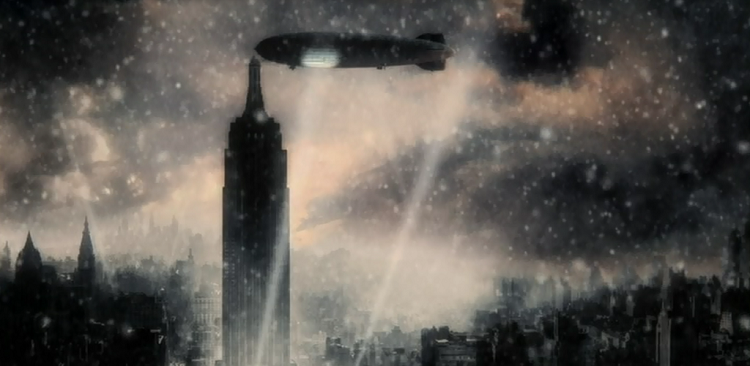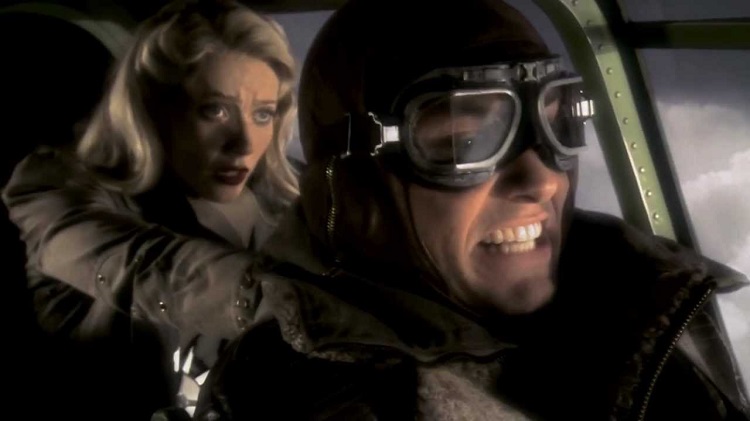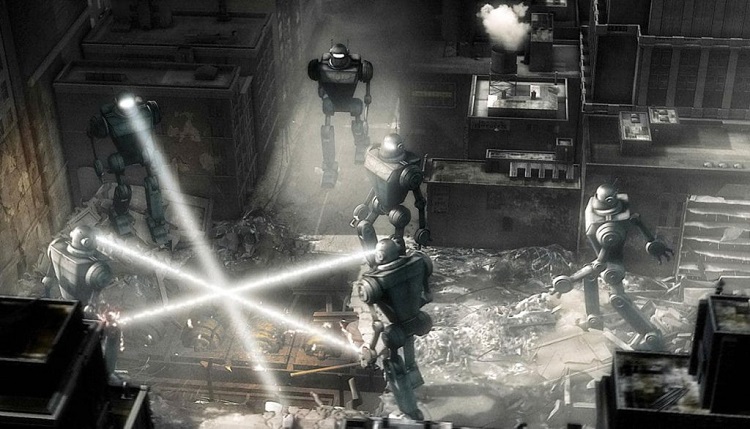The Future Of The Past | Sky Captain and the World of Tomorrow at 15
I still remember when I saw the trailer for Sky Captain and the World of Tomorrow. I couldn’t tell you what film I was in the cinema to see, but I vividly recall watching a sepia-tinged airship crawl across the sky before New York City was attacked by blocky robots. I elbowed a friend I was in the cinema with. “They filmed my dreams!” I whispered.
https://www.youtube.com/watch?v=X5Wcg5m34f
Did the film measure up to the excitement I felt for it? Well, no. But I don’t think it could, to be honest. And the look definitely measured up. It was one of the first films to use a “digital backlot” where everything save the human actors was computer-generated. This could have looked awful, but the deliberate low-fidelity of the film (designed to evoke classic ‘50s serials) worked in its favour. The effect was something unique, something that feels like it’s in black and white even though it isn’t. Many films over the following years would try to replicate it, but none quite managed it. It’s like an old faded photograph, like a living artifact from times gone by.
Right from the start the film makes it clear that we’re seeing a world that never was, as we watch the Hindenburg dock at the Empire State Building. This has a dual effect; not only are we watching the symbol of the failure of airships berth itself at a real life airship dock that was never actually used, but we’re also hearing German crewmen and civilians going about a normal life in 1939. This is a world where the Weimar Republic never fell, and where life (as people expected) just went on. This was the 1939 that people had expected to get.

This isn’t a science fiction film, you see. This is “retrofuturism”, the futuristic vision of days gone by. The film wears these influences on its sleeve; right in its title in fact. 1939 was the year that the World’s Fair came to New York, a film that marketed itself as showing off “the World of Tomorrow”. Sky Captain takes several of its designs directly from works exhibited at that fair. It’s ironic that an exhibition so dedicated to hope for the future took place as the world was falling into years of bloody war.
That’s not the only influence on the film, of course. Impressionistic German films like Metropolis are a clear visual reference. Another overt reference is to a 1941 short animated film, The Mechanical Monsters, which was about Superman. The comic book superhero fought robots under the control of a mad scientist in a sequence that inspired not just this film but also Miyazaki’s Laputa: Castle in the Sky. The clearest inspiration for Sky Captain though is the serialised film adventures popular from the 1910s up to the 1950s. These were generally ten to fifteen short episodes long, released into cinemas on a weekly basis. In the days before television serials this was how stories were often told; and a hero like Sky Captain would have fit right into them.

In the vein of classic fictional pilots like Biggles, Sky Captain (played by Jude Law) is an airplane pilot from the era when airplane pilots were heroes. His exact job is left intentionally vague, as was often the case in the old serials. All we know and need to know is that he is a hero who is called in when the city is in peril; the peril this time coming from an army of robots sent to try and retrieve some mysterious McGuffin transported to the city by a scientist aboard the Hindenburg and handed off to ace reporter Polly Perkins (Gwyneth Paltrow). Perkins and the Captain soon wind up on a globe-trotting adventure to uncover the mystery behind the robots and foil the plots of the shadowy villain Totenkopf.
The plot is probably the weakest part of the film; one of the unfortunate perils of taking influence from serials that had to stretch out across fifteen episodes of cliffhangers. It’s not the worst aspect of that influence though; as the film uncritically incorporates several problematic aspects of older media. The most striking is the lack of diversity, with the only two non-white faces in the cast being Omid Djalili (in exactly the type of “generic Middle Eastern man” role he has joked about) and Bai Ling as a mute mysterious assassin. Equally troubling though is the very structure of the film itself, which follows a very old pattern. The world is shown as the playground of white Westerners, with locations like Tibet existing only as a backdrop for their struggles. It’s an extremely colonialist worldview, and one the film seems entirely unconscious of.

Despite this the film does genuinely have its heart in the right place, with a story about the triumph of optimism over pessimism and a clear and genuine affection for the classics it references. More importantly, it’s fun; fun with a capital F. Despite that the film failed to strike it big at the box office, however. Unlike the 1970s where a film like Star Wars could trade on nostalgia for the old serials among those who remembered them from 20 years earlier, the only pre-built audience for Sky Captain was people like me with an appetite for old obscurities.
The film did its best to overcome this through a stellar cast, won over by the director’s vision. As well as Paltrow and Law the cast includes Michael Gambon, Giovanni Ribisi, and most famously Angelina Jolie. The trailers made a great deal of her appearance (since she was easily the biggest star in the film at the time), so it’s a shame that it’s basically an extended cameo. (Jolie did throw herself fully into the role, and even spent time with WW2 veterans to make sure she could replicate their mannerisms). But though the cast gave it their all, and the film was (and remains) a unique delight, the movie failed to find an audience and was a complete commercial failure.

Sadly the film’s lack of success means that it’s the only film that writer/director Kerry Conran has yet produced. That’s a real shame, as he shows a great deal of talent and it would have been good to see what he came up with after this. He is still working, so there’s a chance that we may see something from him in the future. And despite its lack of success, it’s impossible to ignore the impact that Sky Captain had. It raised the bar for genre movies, and showed that they didn’t need to fit into the pigeonholes that Hollywood preferred. The modern era of comic book movies owe a great deal to Sky Captain leading the way.

